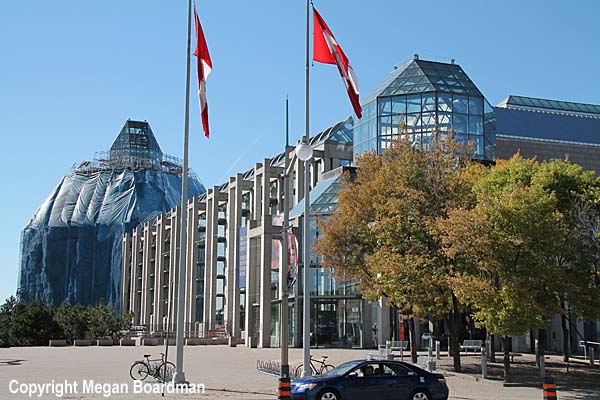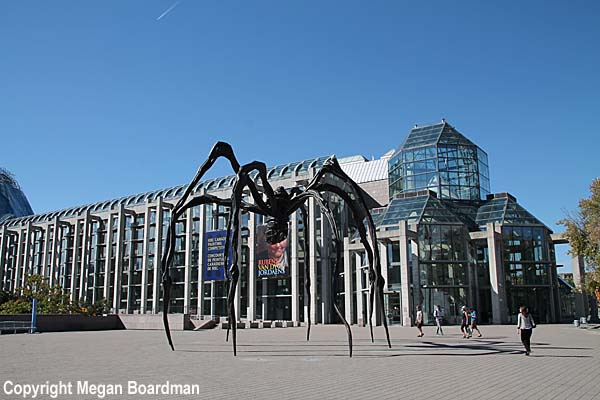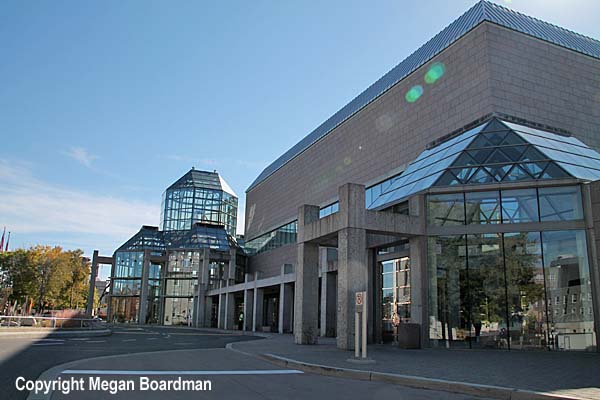National
Gallery of Canada, Ottawa

Architect
|
Moshe Safdie
|
Date Built
|
Completed
April 1988
|
Location
|
380 Sussex
Drive
|
Description
|
Moshe Safdie is an
Isreali born Canadian architect who has
been responsible for a number of important
buildings in his adopted country.
The first was the amazing Habitat
residential complex that Safdie designed
for Expo 67 in Montreal. The most
recent is Lester B Pearson Airport,
completed in Toronto in 2007. In
between he created the $123 million
National Gallery of Canada which occupies
a prominent site on Sussex Drive looking
across to the Canadian Parliament
Building.


The building was constructed of poured
concrete, Tadoussac variegated rose
granite, and glass and features a
cathedral-like great hall from which
visitors can access the galleries.
After entering the gallery, visitors walk
up a long incline to the great hall
designed, as the gallery says, to create,
“... an agreeable sense of
anticipation”. When
these images were taken in October of
2013, the glass spires above the great
hall had been covered in an attempt to
make it resemble an iceberg.
Outside the gallery stands Louise
Bourgeois’s “Maman”, a 30 foot high bronze
spider sculpture. The gallery’s
director says that, “Maman is a
very important and exciting
acquisition for the Gallery and for
Canada as a whole. Her sheer
size and extraordinary power make
Maman an icon that will turn the
National Gallery’s Plaza into a
landmark.” The giant
spider with its egg sac containing 26
marble eggs, was a controversial
acquisition since it cost $3.2million or
about one third of the gallery’s annual
budget. The artist explains that, “The
Spider is an ode to my mother. She was
my best friend. Like a spider, my
mother was a weaver. My family was in
the business of tapestry restoration,
and my mother was in charge of the
workshop. Like spiders, my mother was
very clever. Spiders are friendly
presences that eat mosquitoes. We know
that mosquitoes spread diseases and
are therefore unwanted. So, spiders
are helpful and protective, just like
my mother.”

Inside the galleries have been divided
into six areas, “... the Canadian
collection, the European, American,
and Asian galleries, the Inuit
galleries, a section for contemporary
art (including video), another for
prints, drawings, and photographs, and
a separate space for temporary
exhibitions.”

|
Close
Window

|



